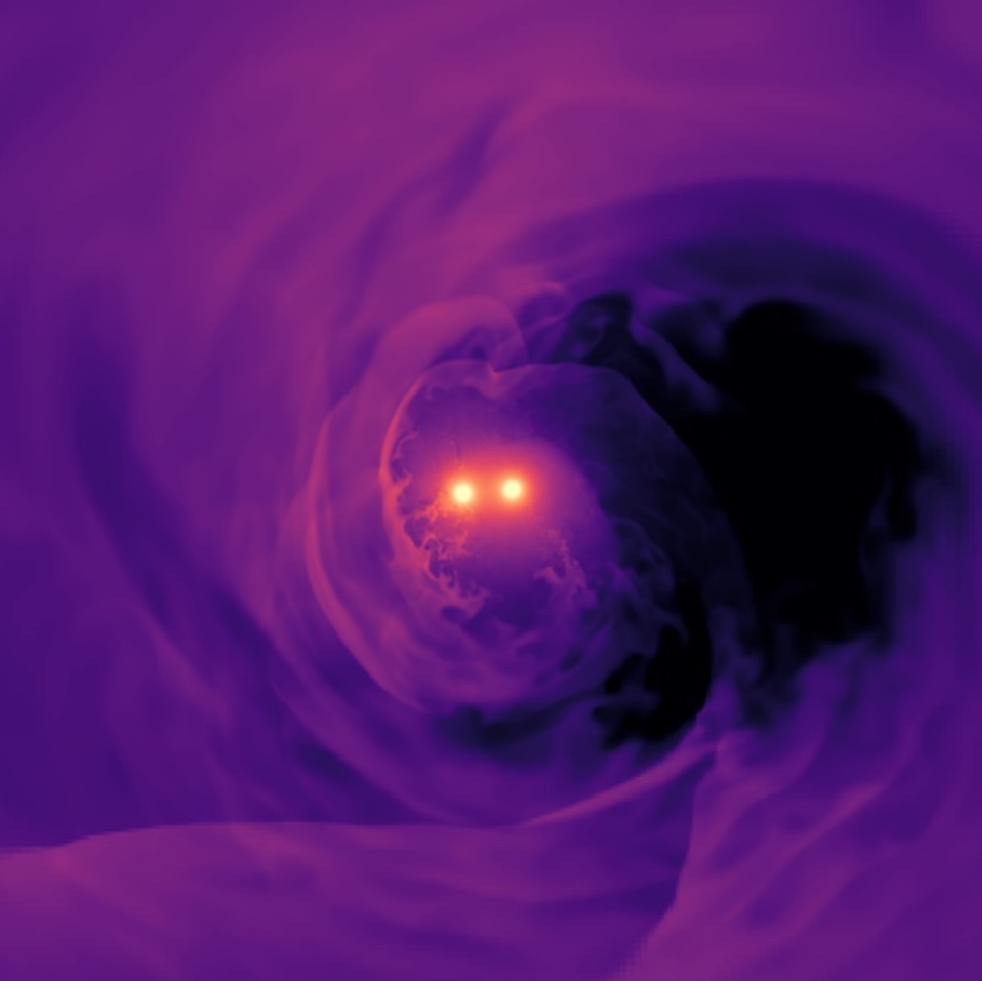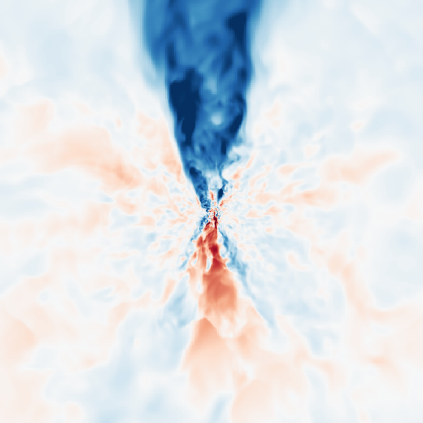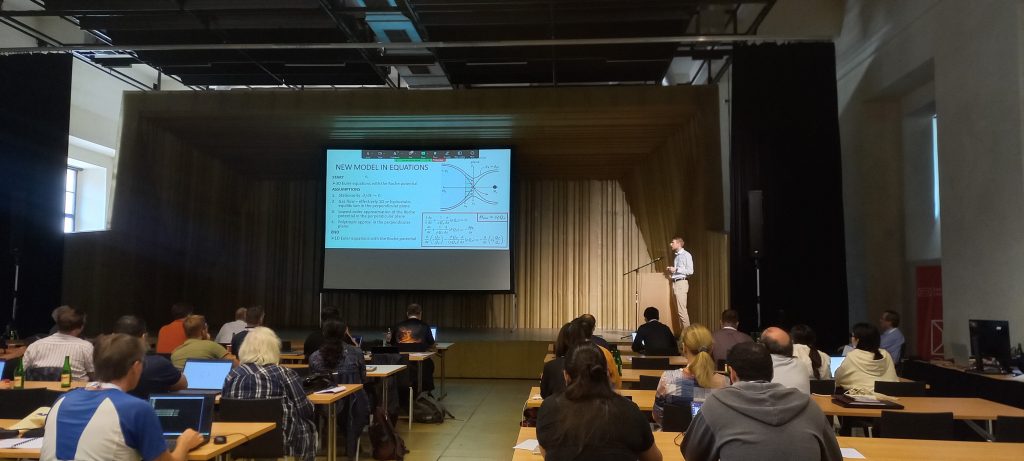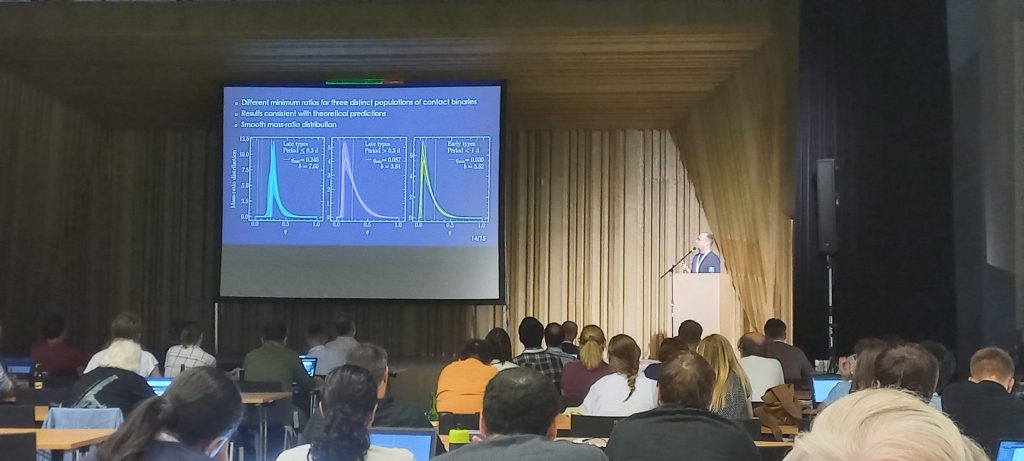Two-day visit at MPA Garching, where I gave SESTAS seminar on common envelope evolution. Lots of great discussions!
Heidelberg and Sofia
A short trip to Heidelberg to visit Prof. Roepke’s group working on common envelope evolution. Gave a short talk on our recent results on transients. Then on to Sofia, Bulgaria, for a business meeting of European Astronomical Society with representatives of affiliated societies.


We are hiring postdocs and PhD students!
We seek up to 3 PhD students working on various aspects of binary stars ranging from analysis of population observed in time-domain surveys to developing new methods for computer simulations. The positions are financed by grants from the European Research Council and Czech Science Foundation. For description of the positions and application instructions see the website of our PhD program. The deadline for applications is January 15 2025.
We are also inviting applications for two postdoc-level positions to work within the project ROGALLO financed by our ERC Consolidator grant. The goal is to develop new methods for computer simulations of fluid dynamics in binary systems, including progenitors of gravitational waves, mass-transferring binaries, and explosions in binaries. The positions are funded for up to 5 years each. For more details and application instructions see the official advertisement. The deadline for applications is January 26 2025.
All positions include internationally competitive salaries, full employee benefits of Charles University and Czech government, and funds for travel and invitation of guests. Our alumni have been successful in winning competitive postdoctoral positions, and international and national fellowships. See former team members and list of their papers.
Our group has access to a dedicated computer cluster, which will be soon expanded with new GPU-enhanced nodes. The group has been successful in applying for time on national supercomputing infrastructure with postdocs and students leading the proposals. The group is connected to observational efforts in time-domain astronomy as part of the All-Sky Automated Survey for Supernovae and other theoretical and observational collaborations.

Journey to the center of the common envelope evolution
Is there a contact binary sitting at the center of common envelope? Do we actually need magnetic fields to explain the “jets” seen in planetary nebulae? These are very exciting questions resulting from the Damien Gagnier’s third paper written during his postdoc stint in Prague.


Postdoc outgoing fellowship
Congratulations to Milan Pešta for winning the postdoctoral outgoing fellowship from Czech Science Foundation. Milan will spend two years at the Department of Astronomy of The Ohio State University working with Yuan-Sen Ting on machine learning and then will return for one year to our the Institute of Theoretical Physics in Prague.

ERC Consolidator grant for our group
I am very happy and honoured to be awarded one of ERC Consolidator grants. In the project ROGALLO we will construct new simulations of all sorts of binary stars. Thanks to all who have helped, especially students and postdocs, as well as my family for patience and support. Looking forward to what’s coming!
I am already looking for PhD students to start in Fall 2025: https://mff.cuni.cz/en/physicsphd/f1/phd-projects-funding…
The ad for two postdoc-level positions is coming as soon as the hiring is officially approved.

Graduating PhD student

Congratulations to Milan Pešta on defending his PhD thesis on Illuminating binary star evolution with observed populations and theoretical modeling!
Binary and multiple stars in the era of big sky surveys
In the second week of September we participated in a conference Binary and Multiple Stars in the Era of Big Sky Surveys, which was held in Czech city of Litomyšl. Our group gave three talks (Cehula, Pejcha, Pešta) and engaged in a number of discussions.


Graduating PhD student

Congratulations to Camille Landri to defending with flying colors her PhD thesis on Theory and observations of two stars undergoing strong interaction! Dr. Landri is very soon starting postdoctoral position at the Institute of Astronomy at KU Leuven. Good luck!
Departing postdoc
Damien Gagnier is leaving us after a bit more than three years in Prague. Damien is moving to start his second postdoc at Heidelberg Institute of Theoretical Studies in the group of Prof. Roepke and will continue working on simulations of common envelope evolution. Good luck in future work!
